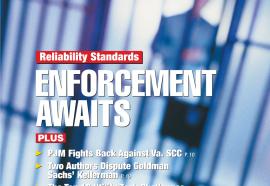People
(August 2006) Patricia Chadwick, president of Ravengate Partners LLC, has been elected to the board of directors of Wisconsin Energy Corp. Pacific Gas and Electric Co. elected Sanford L. Hartman as vice president and managing director, Law, and Brian K. Cherry as vice president, regulatory relations. Jessie J. Knight Jr. was named to the newly created position of executive vice president of external affairs for Sempra Energy. And others...







